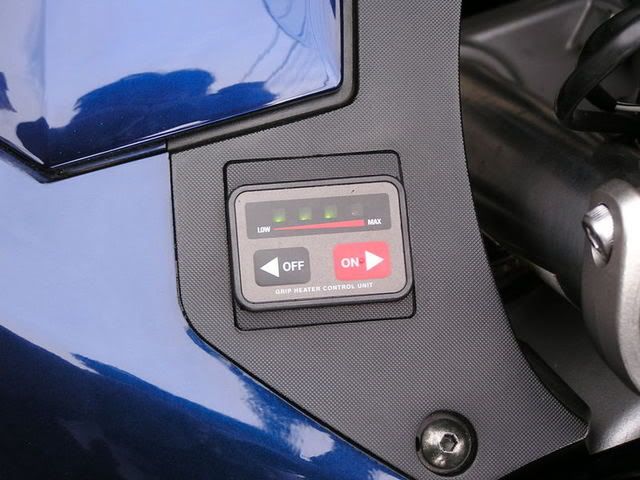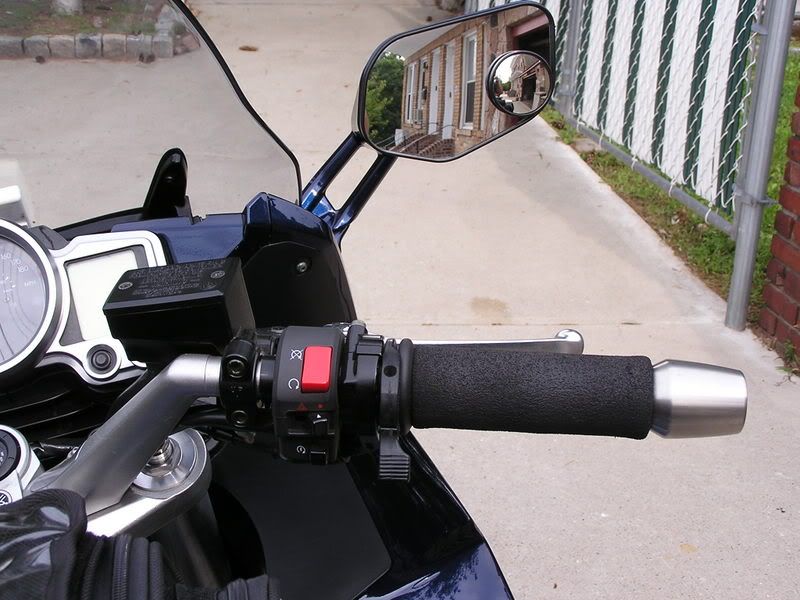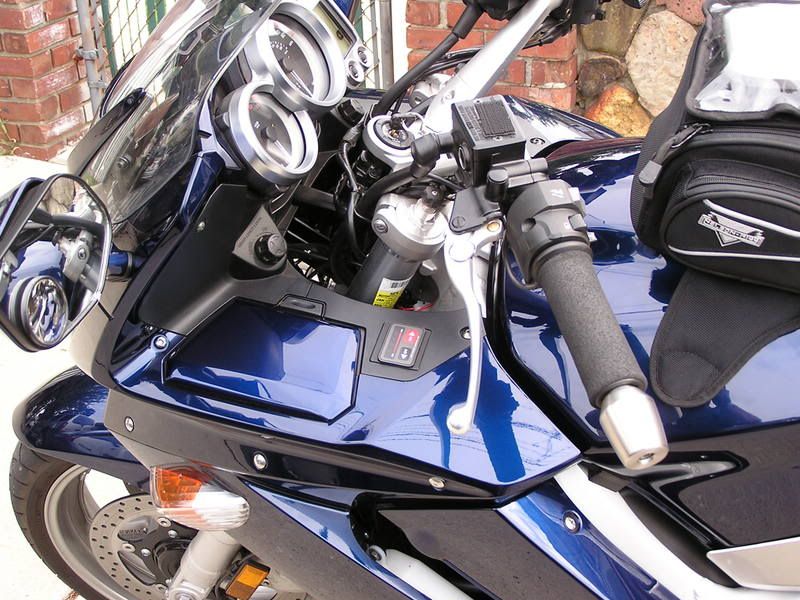Yamaha heated grip kit vs the cheapie grip kits. The same cheapie grip kit can be found under several brand names. I purchased my cheapies through a standard Service Parts Catalog found at any dealer.
In a nutshell –
Yamaha: The controller is vastly superior and much easier on the electrical system. The Yamaha grips run around 36 watts and can get too hot to hold. The controller senses the voltage of your electrical system and automatically shuts the grips off when the voltage drops too low – like when you shut the engine off but leave the ignition on. The controller does not have a power light. The wiring is more complex that it should be. The grips are too short and very hard. Way, way more expensive than it should be. My first Yamaha kit came with a bad controller. After two years my right grip failed. I just installed a third Yamaha grip kit, purchased used.
Cheapies: The controller is pulsed power and when set to anything less than full power severely abuses the electrical system. The grips have a maximum wattage of 19 watts and hardly gets the grips more than tepid. The grips will try to turn on with voltage as low as 6.2 volts. The controller
does have a power light. The wiring harness is too long but easy to connect. The grips are too long and very hard. Even though it is cheap it doesn't perform well enough for use in the northern climes (IMO).
The details:
Yamaha:
The grips are 2 ohms each, connected in series for a total of 4 ohms. The left bar grip has ribs on the inside to keep it away from the bar and minimizes the heat-sinking problem. With the power knob fully on, the grips turn-on at 12.7 volts, but it takes 12.8 for full power regulation. The controller is filled with a potting compound to both weather protect the unit as well as heat-sinking the internal circuitry.
Code:
Volts 12.8 13.0 13.5 14.0 14.4
Amps 2.1 2.3 2.4 2.5 2.5
Watts 26.8 29.9 32.0 35.0 36.0
As soon as the controller is turned on it produces a very narrow power spike that repeats every 140 uS (7 kHz). As more heat is dialed up, the narrow spike becomes wider and wider keeping power on longer. Power ramps up smoothly with very little disturbance to the electrical system. The
Pulse
Width
Modulation is very stable and works great. By the time the knob achieves 100% the PWM will have become 100% DC for full power.
I applied 14.0 volts to the red power wire with a full load on the controller then measured the voltage at the input side of the heated grip fuse, it was 13.8 volts. Measuring the voltage at the output end of the fuse I got 13.5 volts, and measuring at the grip I got 13.3 volts. There is a .7 volt drop between the main power and what actually gets to the grips. That implies that if main voltage drops below 13.5 volts the voltage arriving at the controller will be 12.8 volts (13.5 volts minus the .7 volt drop) which is the threshold for the controller to turn off. This explains why my grips sometimes felt intermittent as my stator started to burn up. The controller can handle more power than the grips can take.
Cheapies:
Begins to turn on at 6.2 volts. The grips are 20 ohms each but hooked in parallel so the controller is looking at a 10 ohm load which can draw 1.4 amps at 14 volts (19.6 watts maximum). The controller knob resistor is not enclosed so the unit couldn't be potted, therefore there is minimal heat-sinking for the circuitry. In two weeks of use the unit was starting to get little white mineral spots all over the components and PCB inside the controller.
The controller does not Pulse Width Modulate. When the controller is at the minimum setting it produces a power pulse at roughly a 700 mS rate (1.25 kHz). As more heat is required the pulses come more frequently. The controller supplies either 0 power or 100% power, like a light switch. If you open the throttle 100% for a couple of seconds then turn loose of it for a couple of seconds then 100% again you will eventually hit an average speed but the ride is gonna suck. This is what the controller does. Every time it pulsed it whacked my power supply and visibly made the output sag and the current meter took a pounding. The current pulsed 0 amps then 1.4 amps then 0 amps then 1.4 amps…. This was brutal on my power supply, just think what it could be doing to your FJR's electrical system.
The power device in the controller is a Fairchild 50N06 which is rated for 50 amps (
700 watts at 14 volts)! The grips are only capable of drawing <20 watts so I checked to see if the controller could manage a load like the Dual Star heater elements. I found that the drive circuitry maxed out around 26 watts and started to oscillate wildly. I aborted this test before causing smoke.
All in all, I found the cheap grip kit to be just that, in all aspects. The Yamaha grip kit is wicked expensive for what you get, but at least it works. The best solution is probably heat elements under the grips of your choice, controlled by a HeatTroller. There will be more install work but the final results should be much better.
Edited: This is just intended to compare the Yamaha vs Cheapies. As noted in other posts there are other solutions available.













































